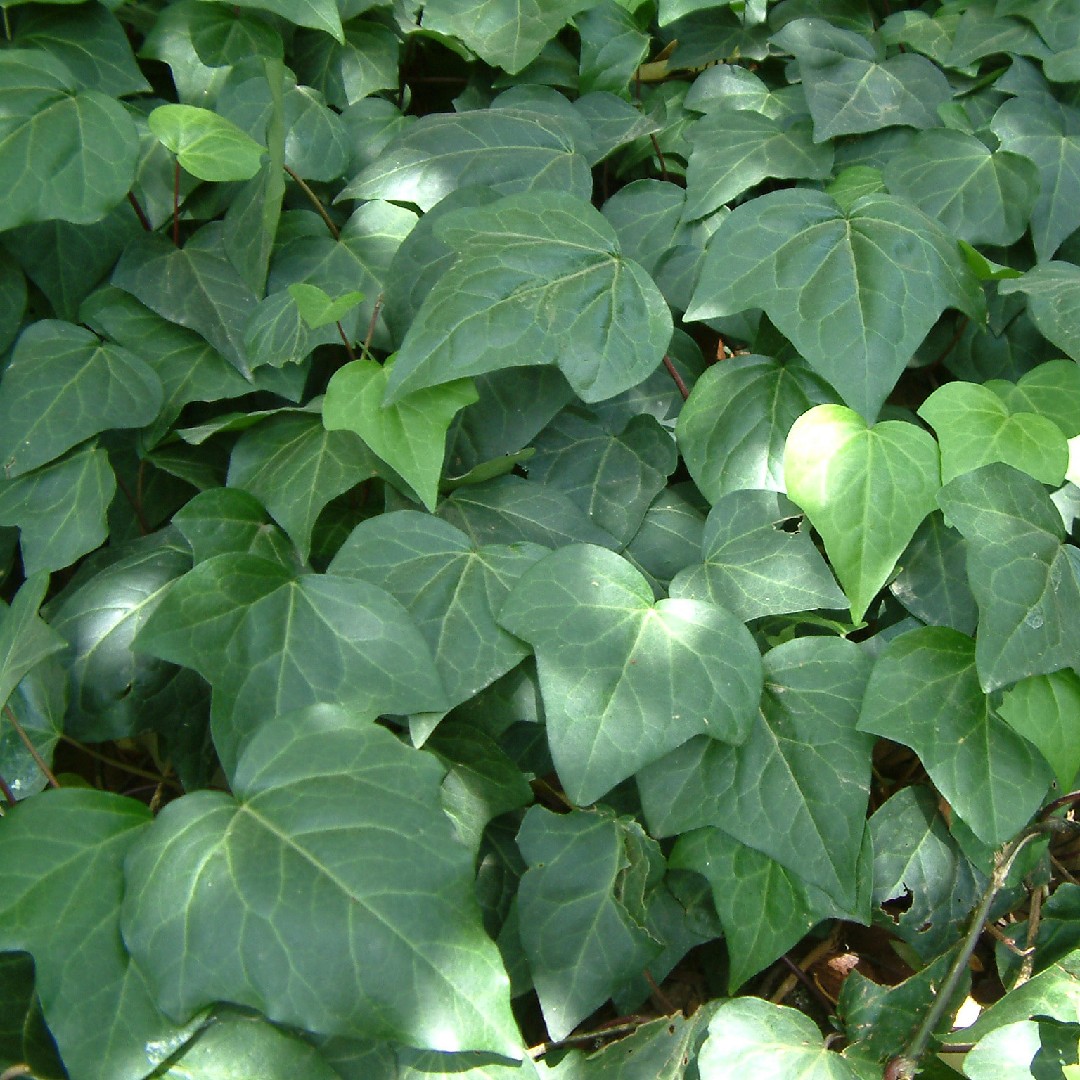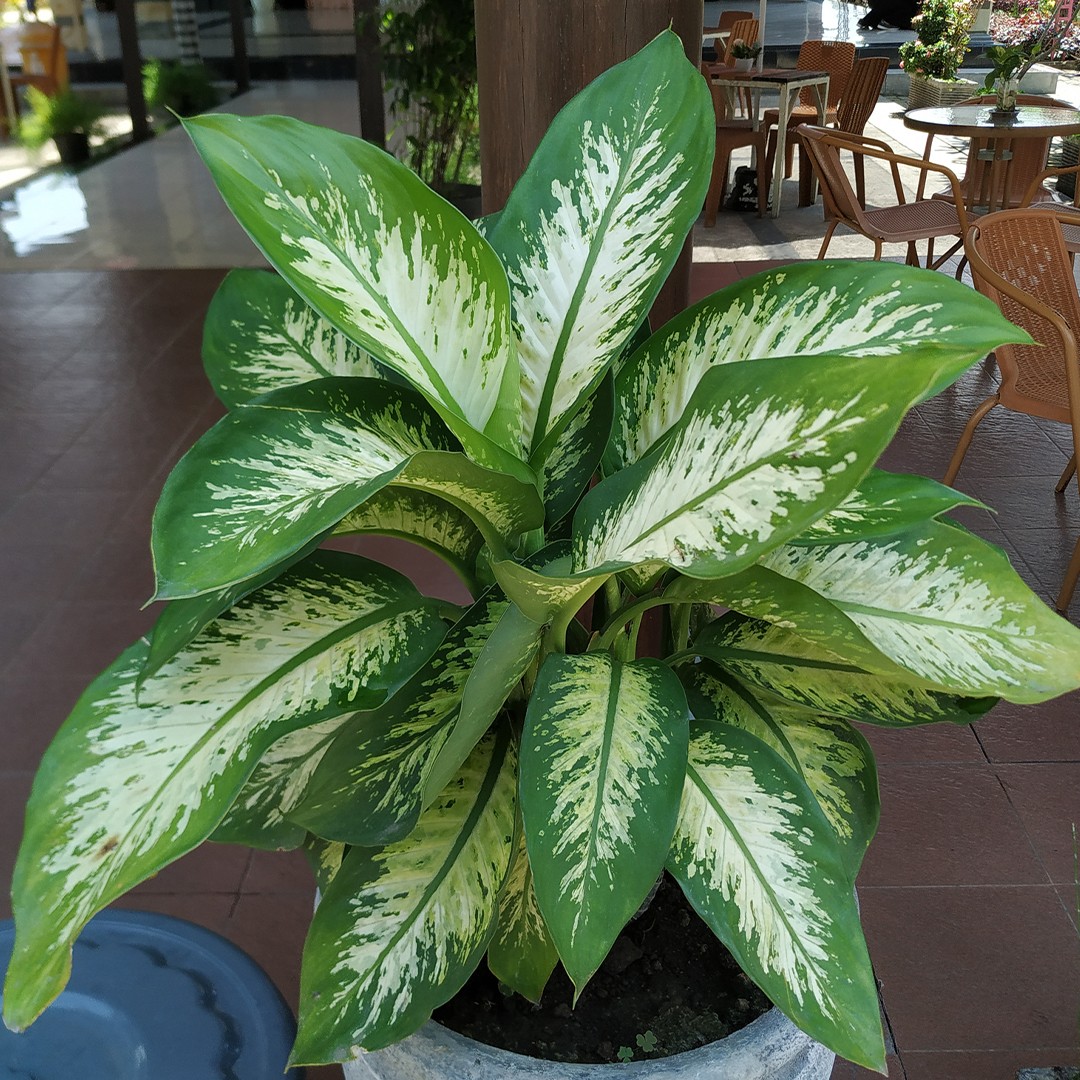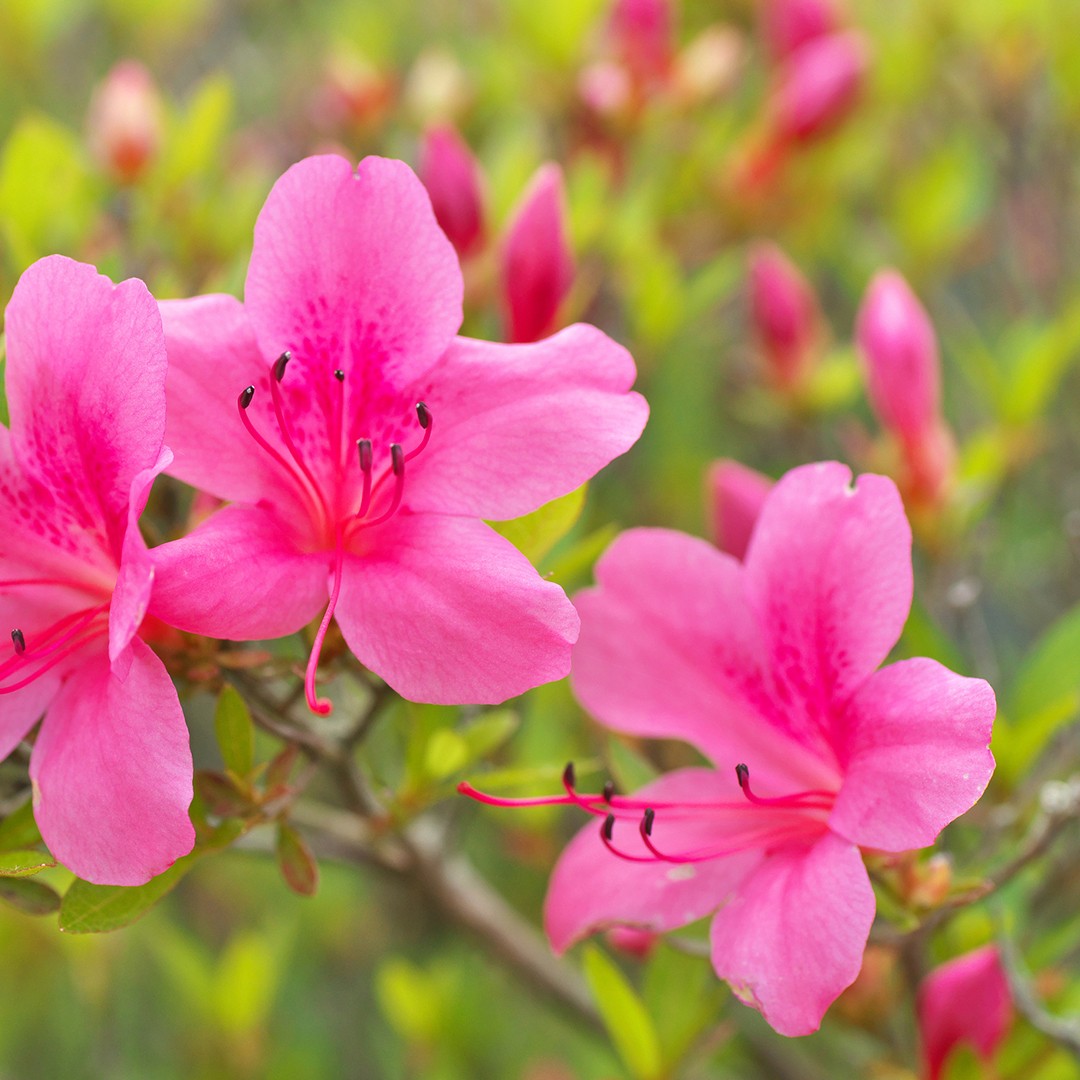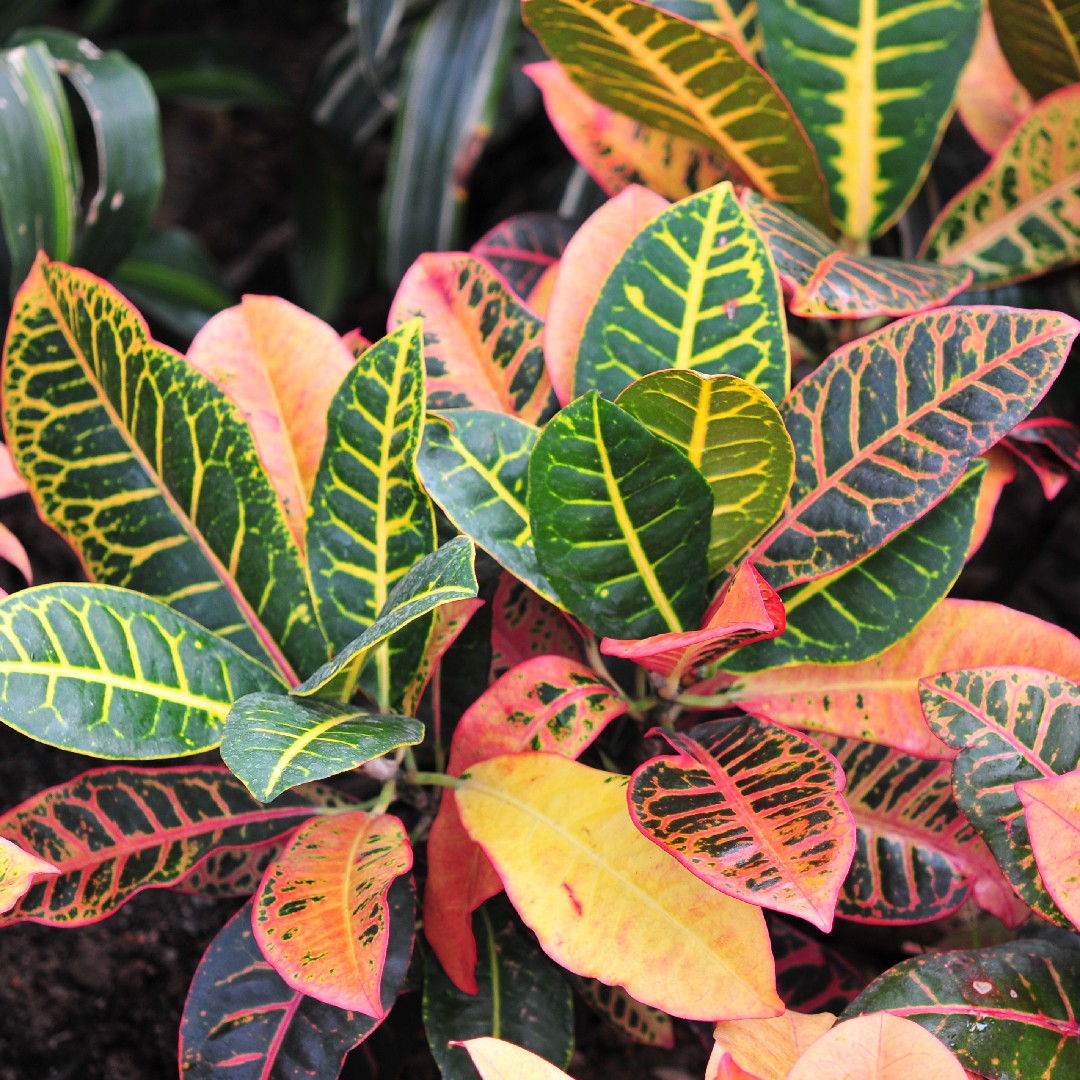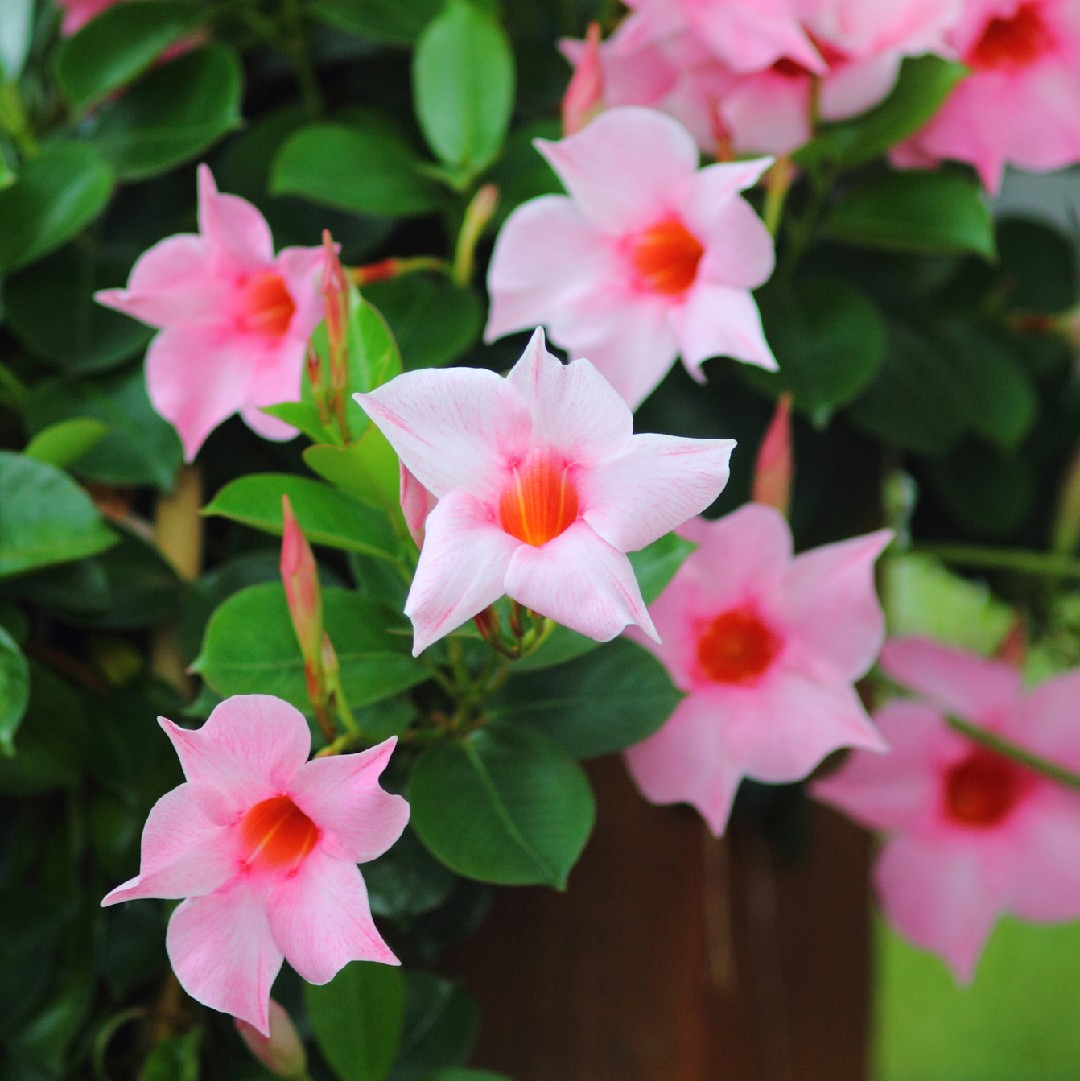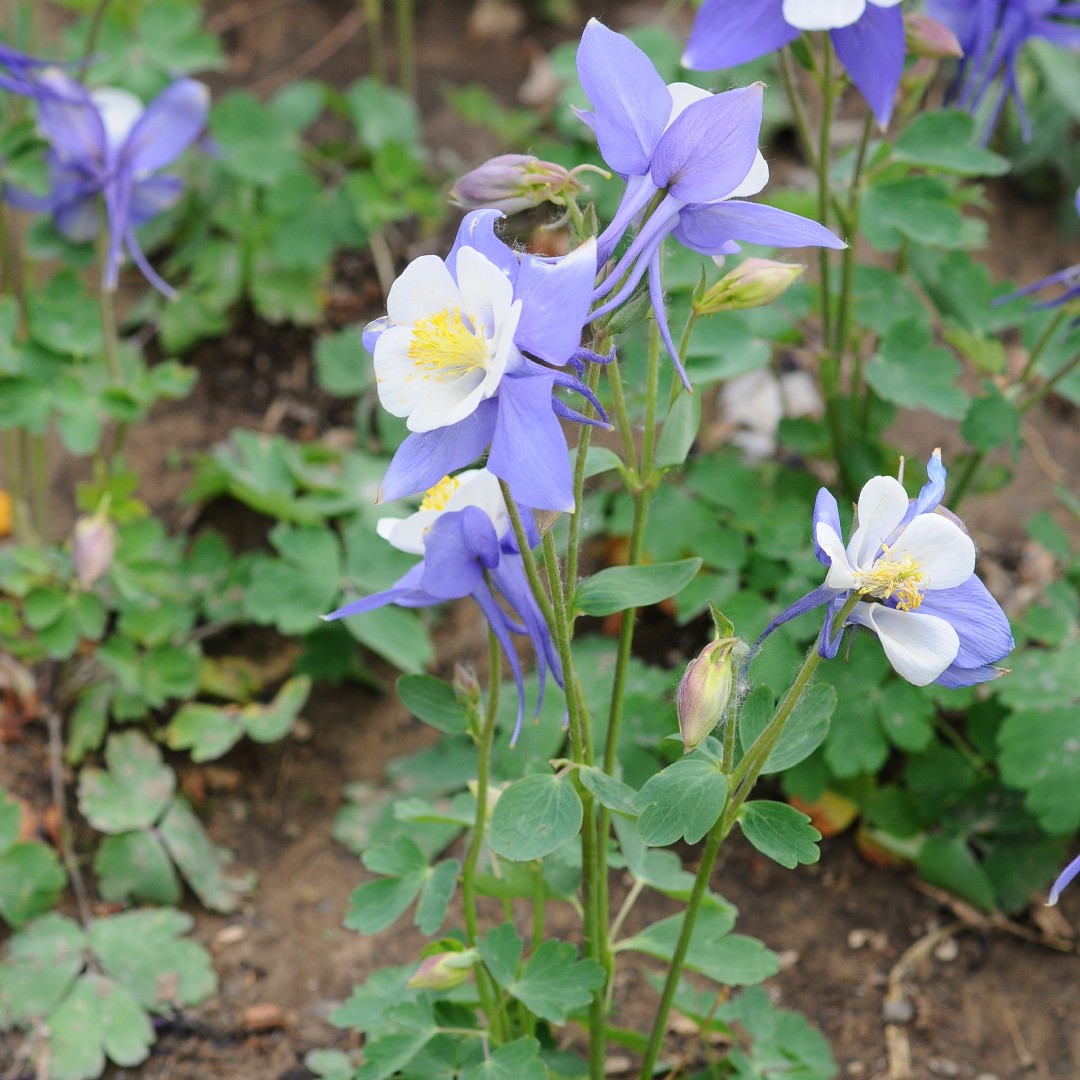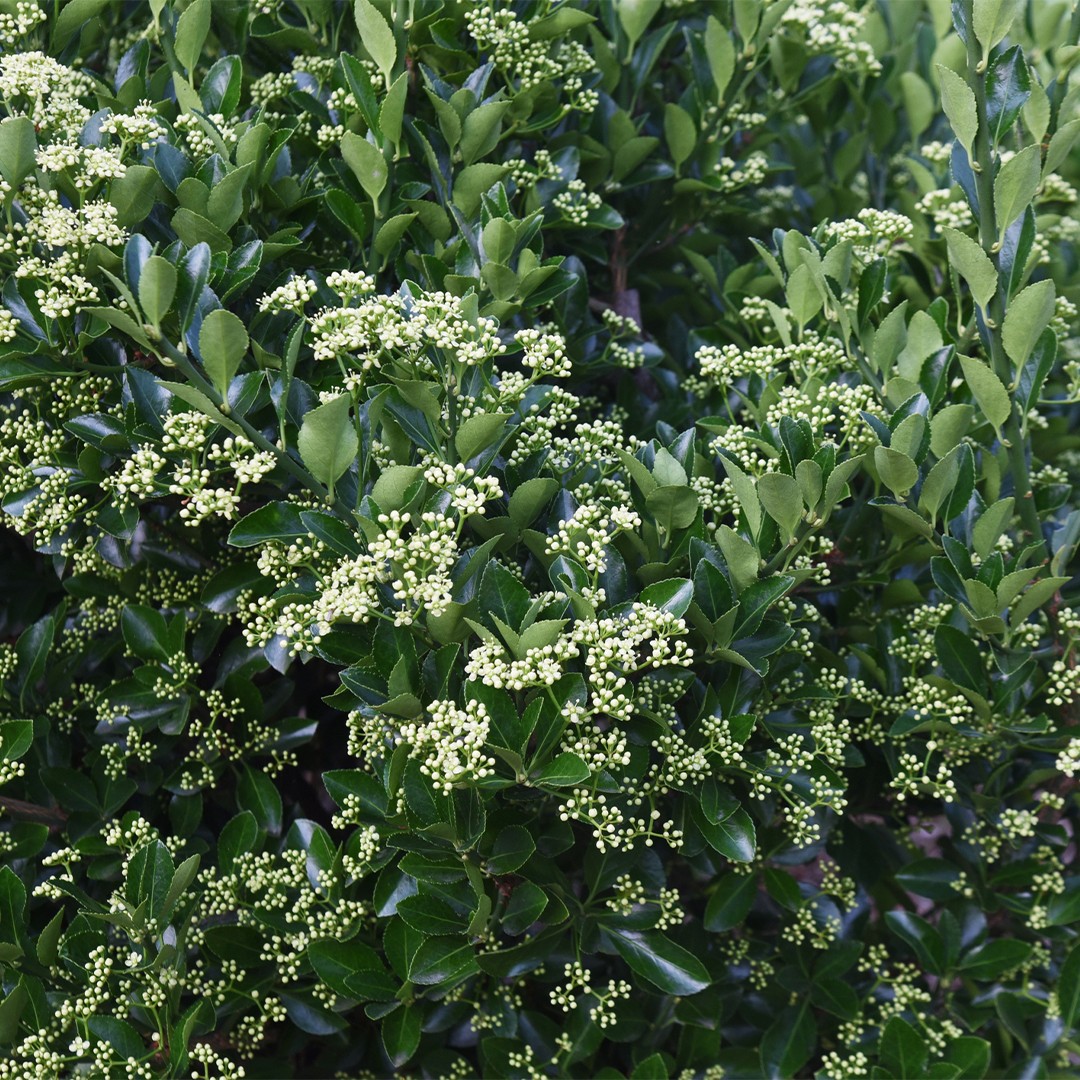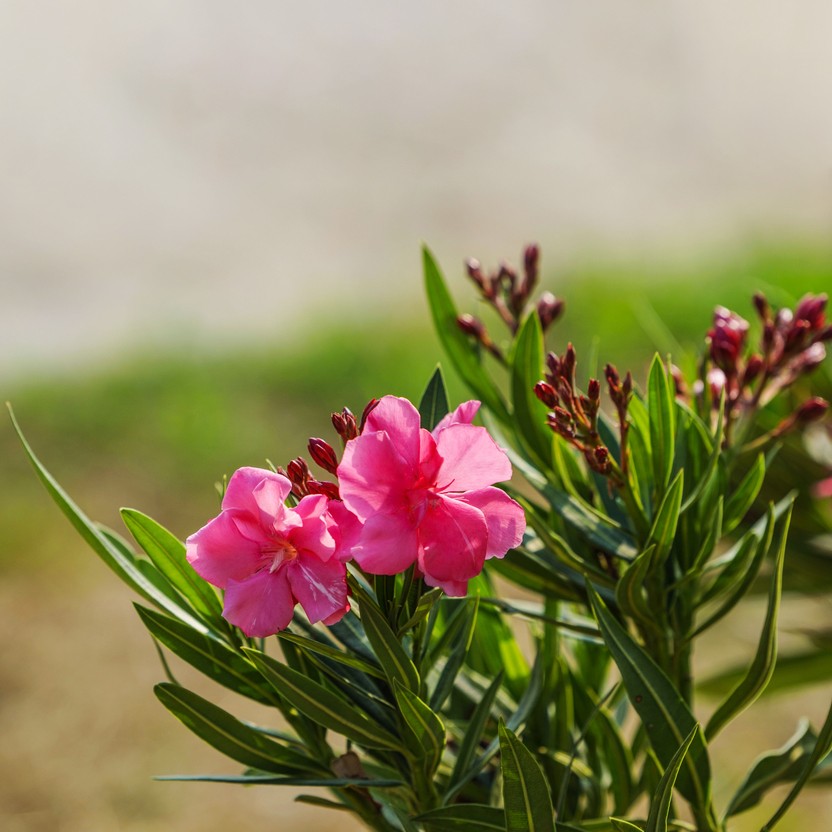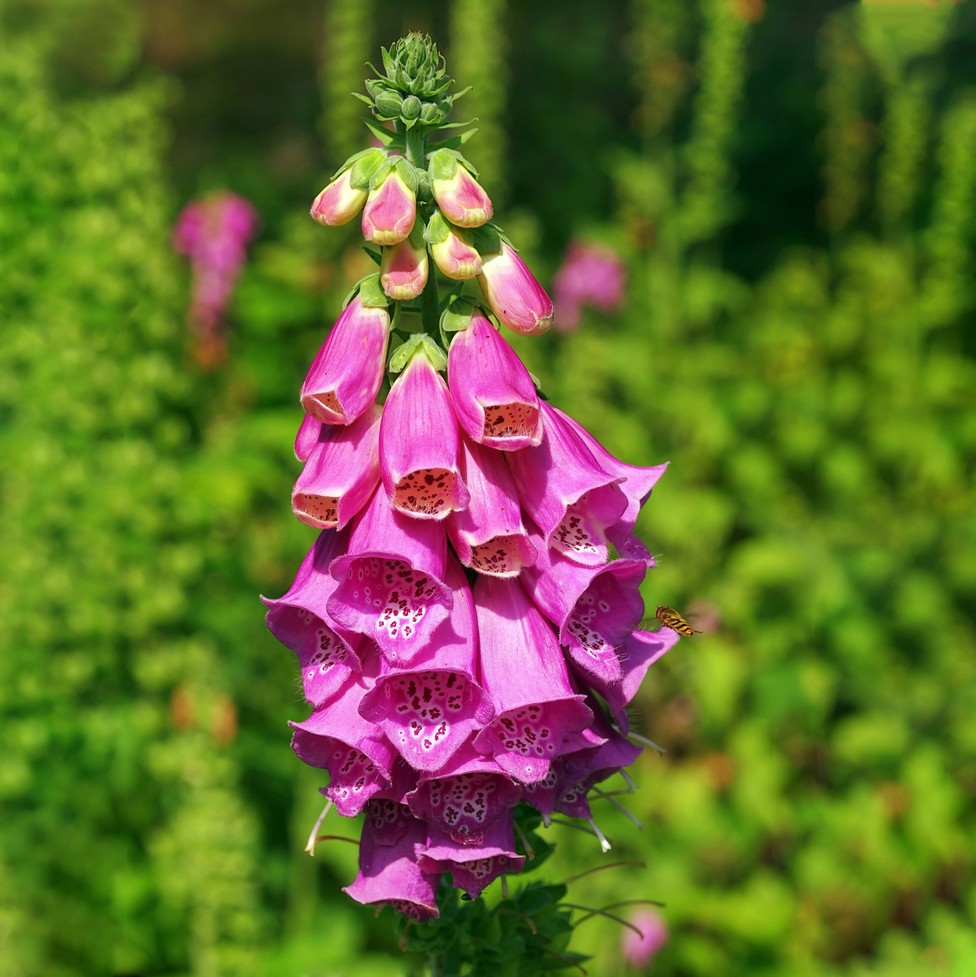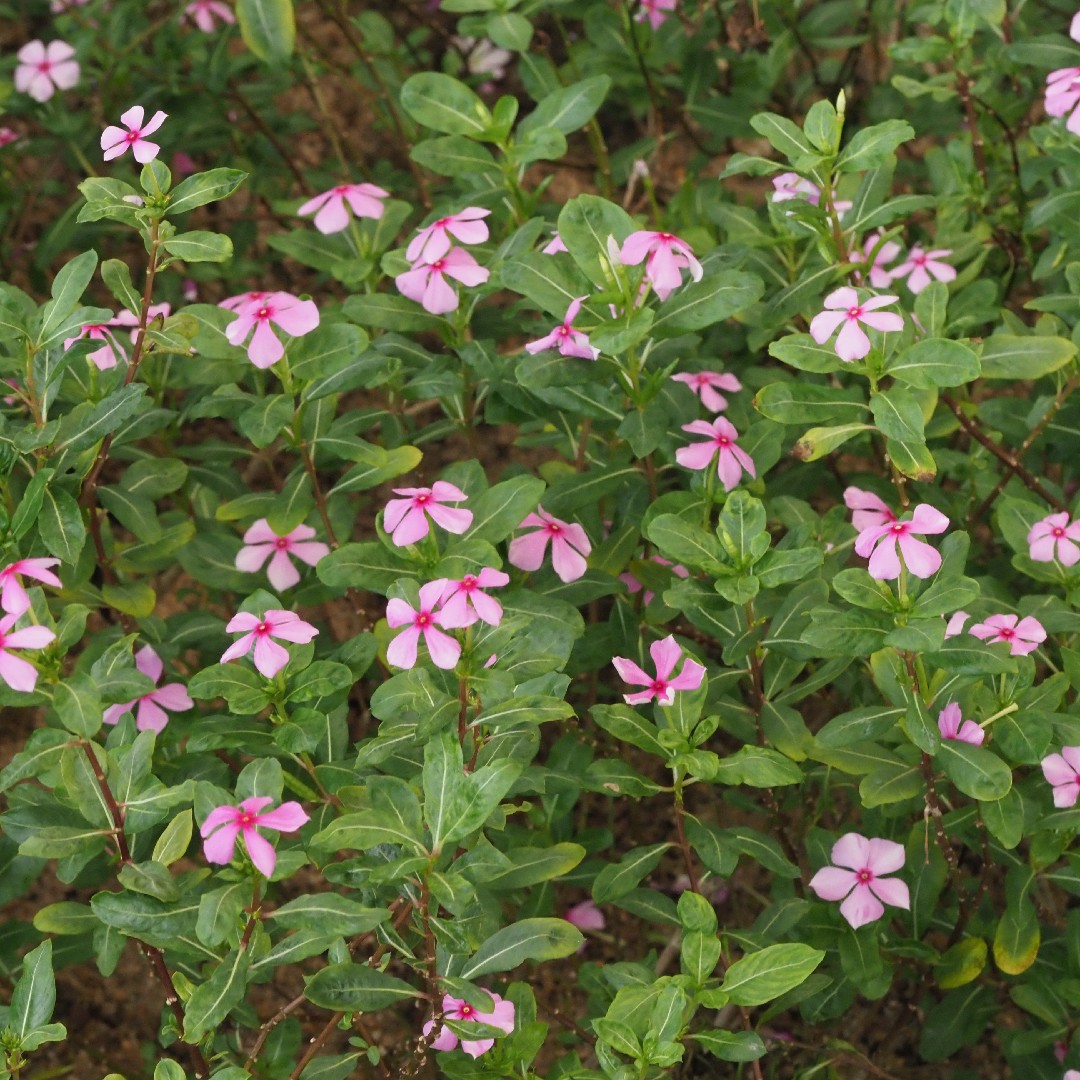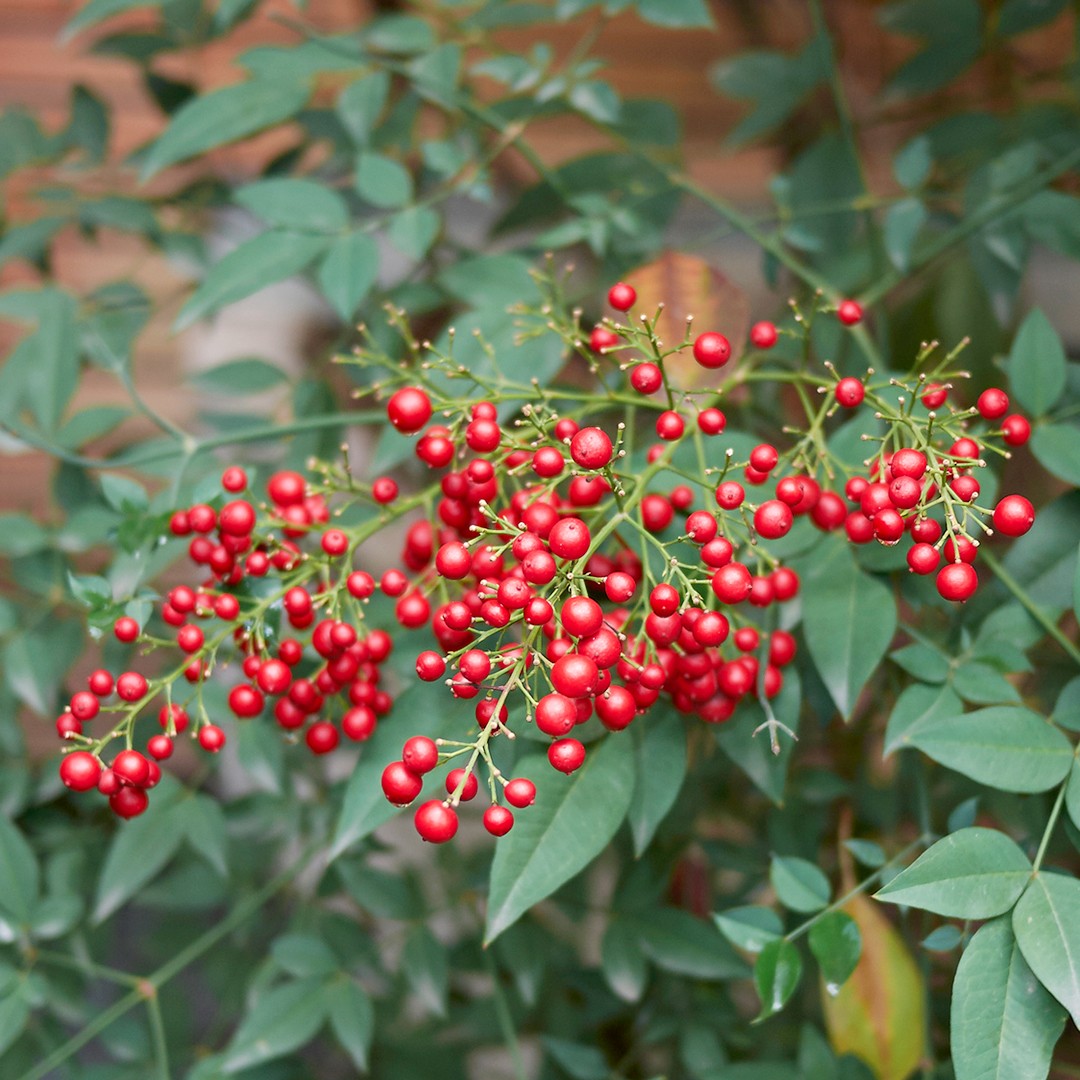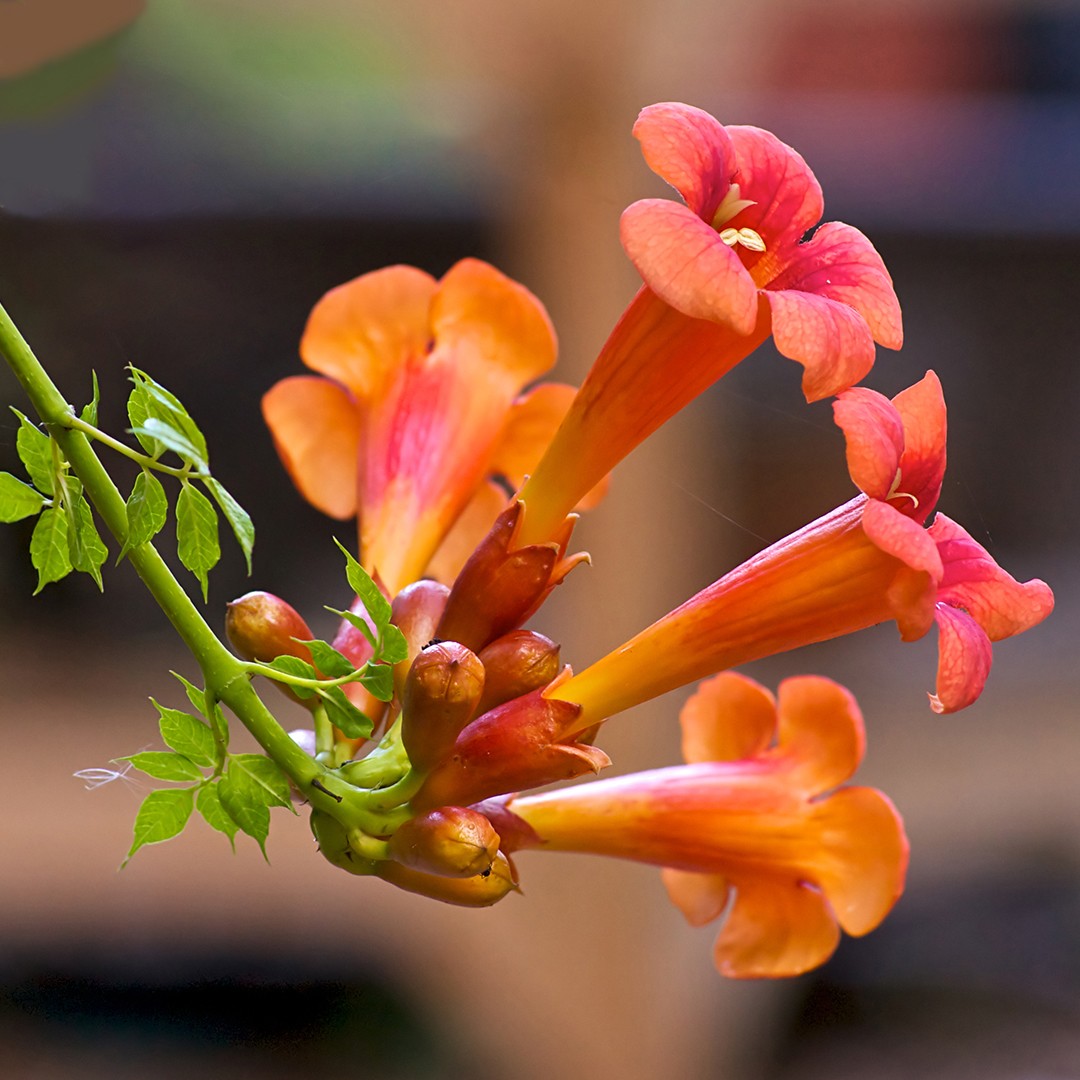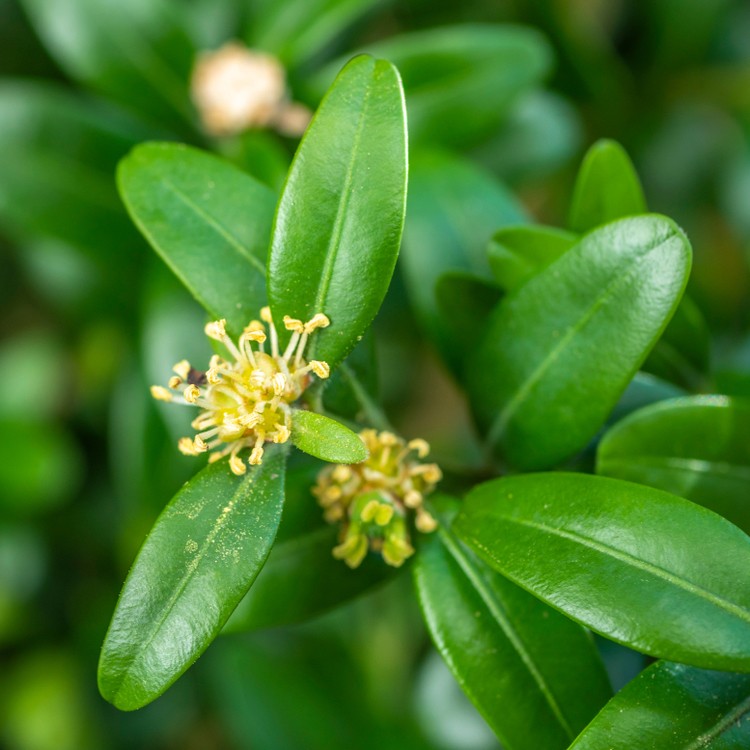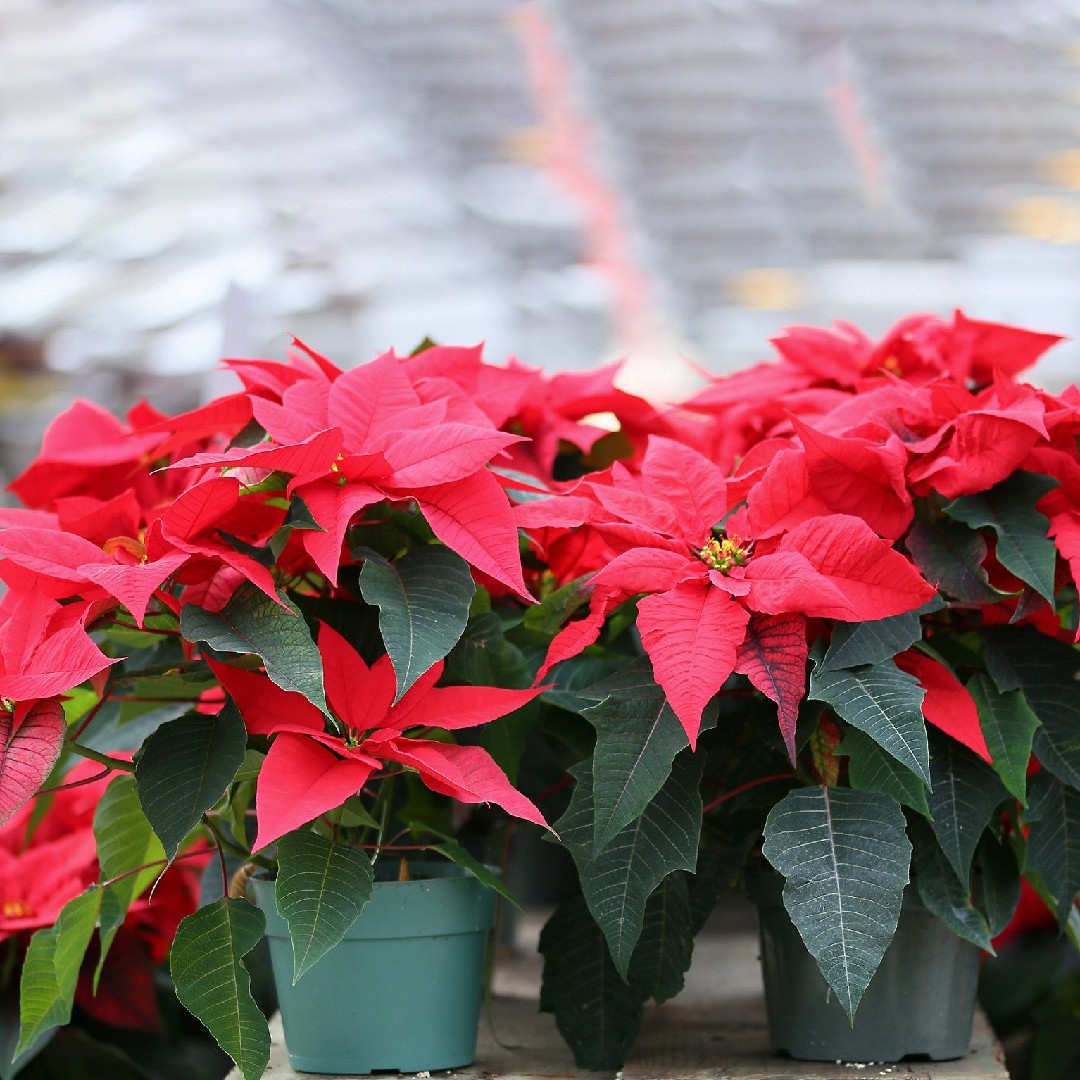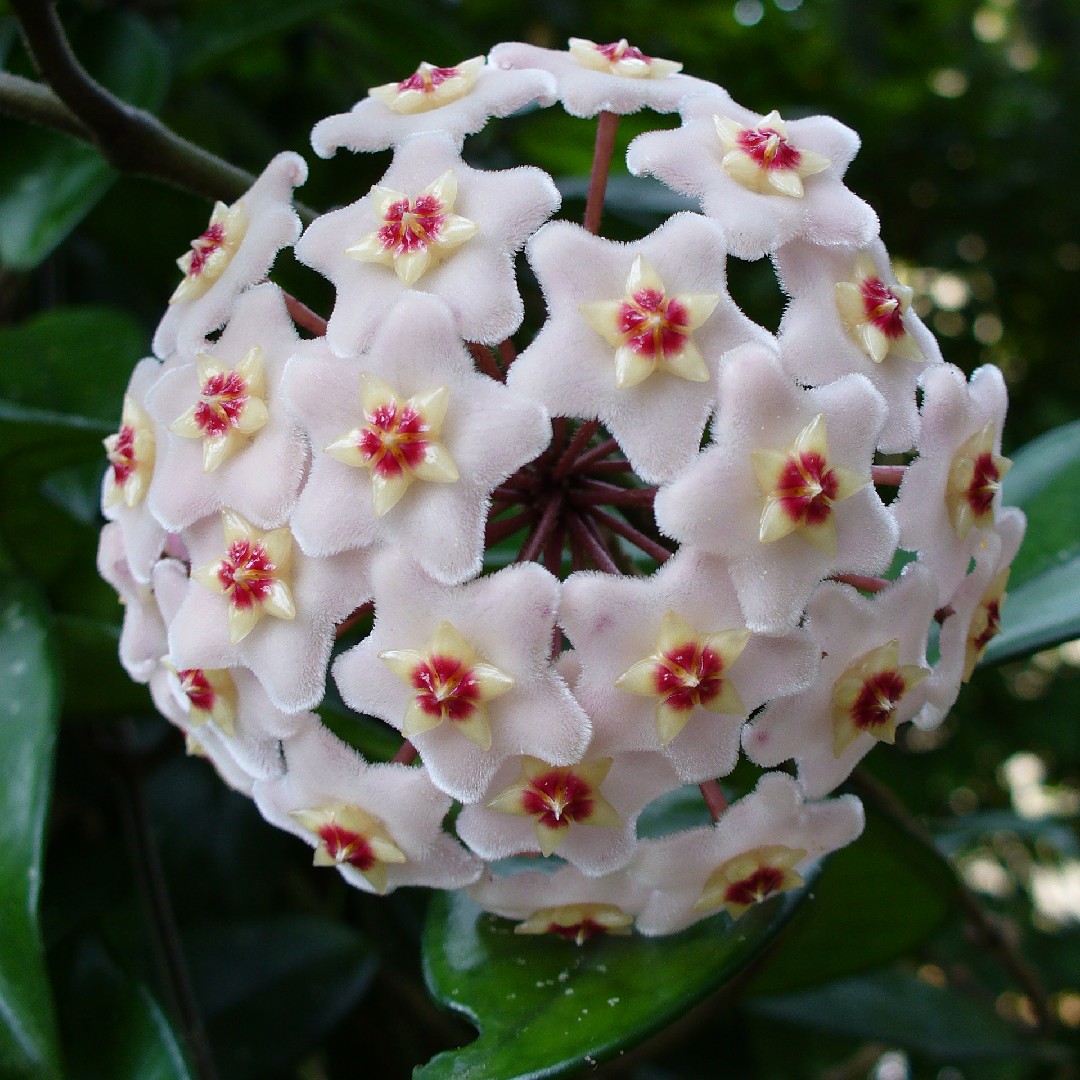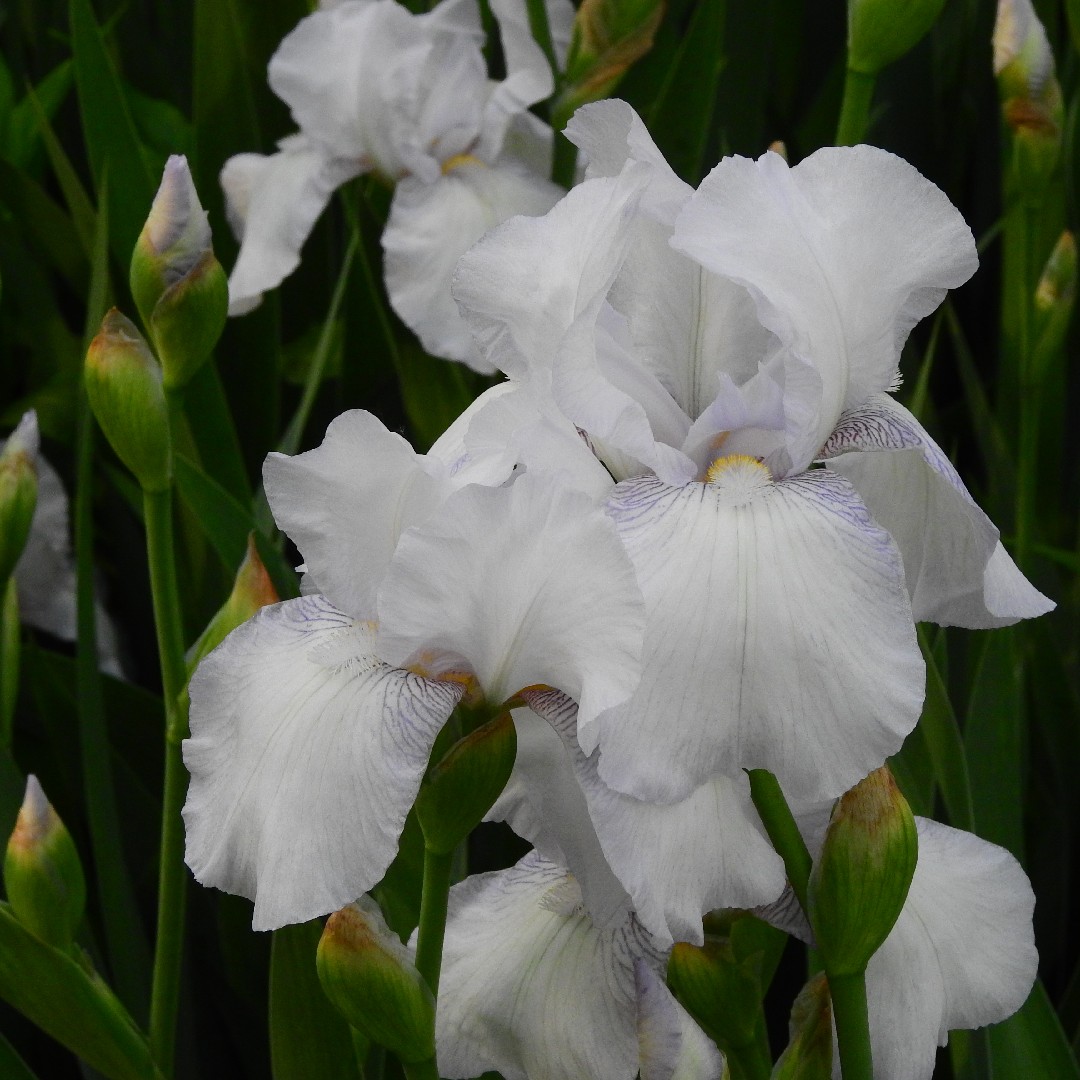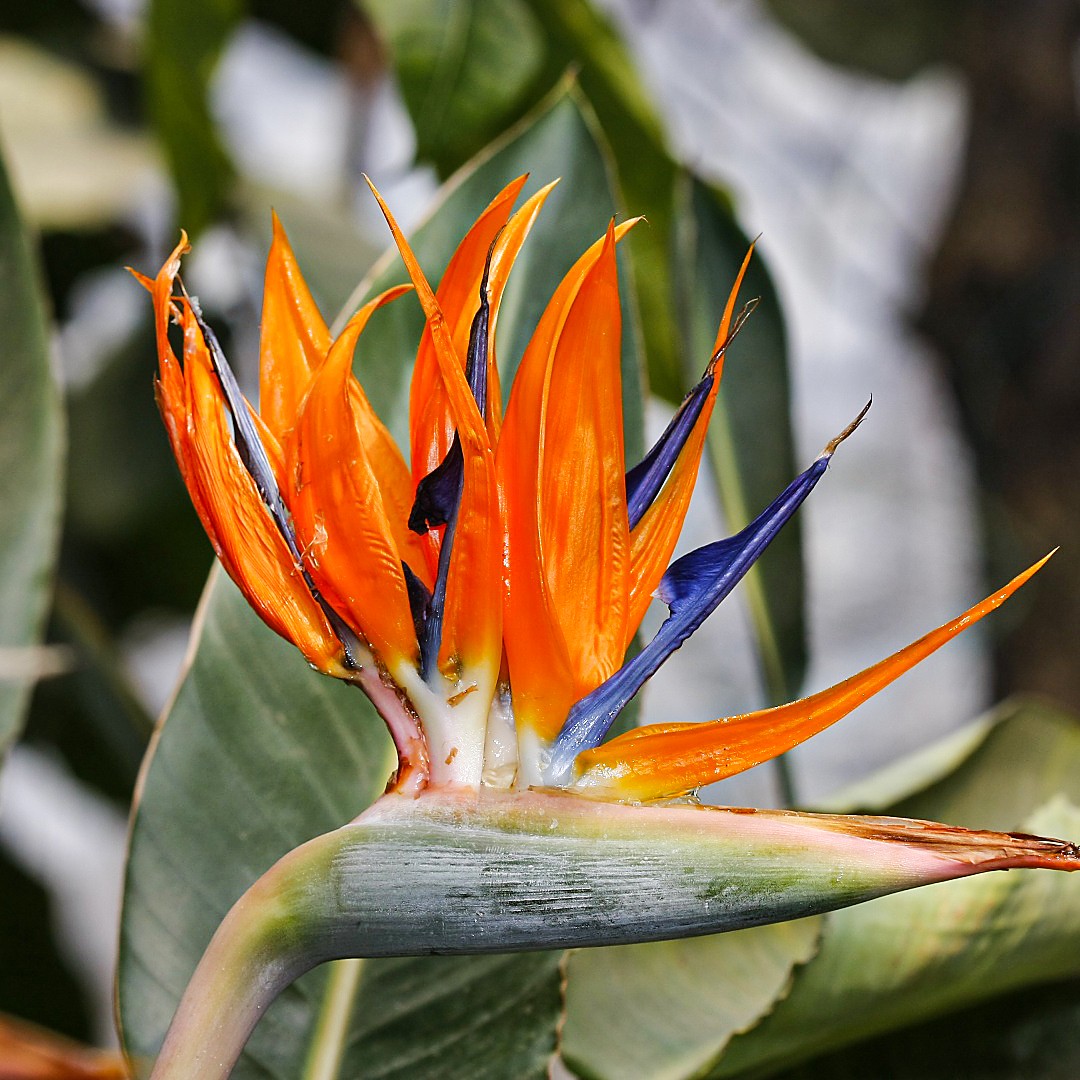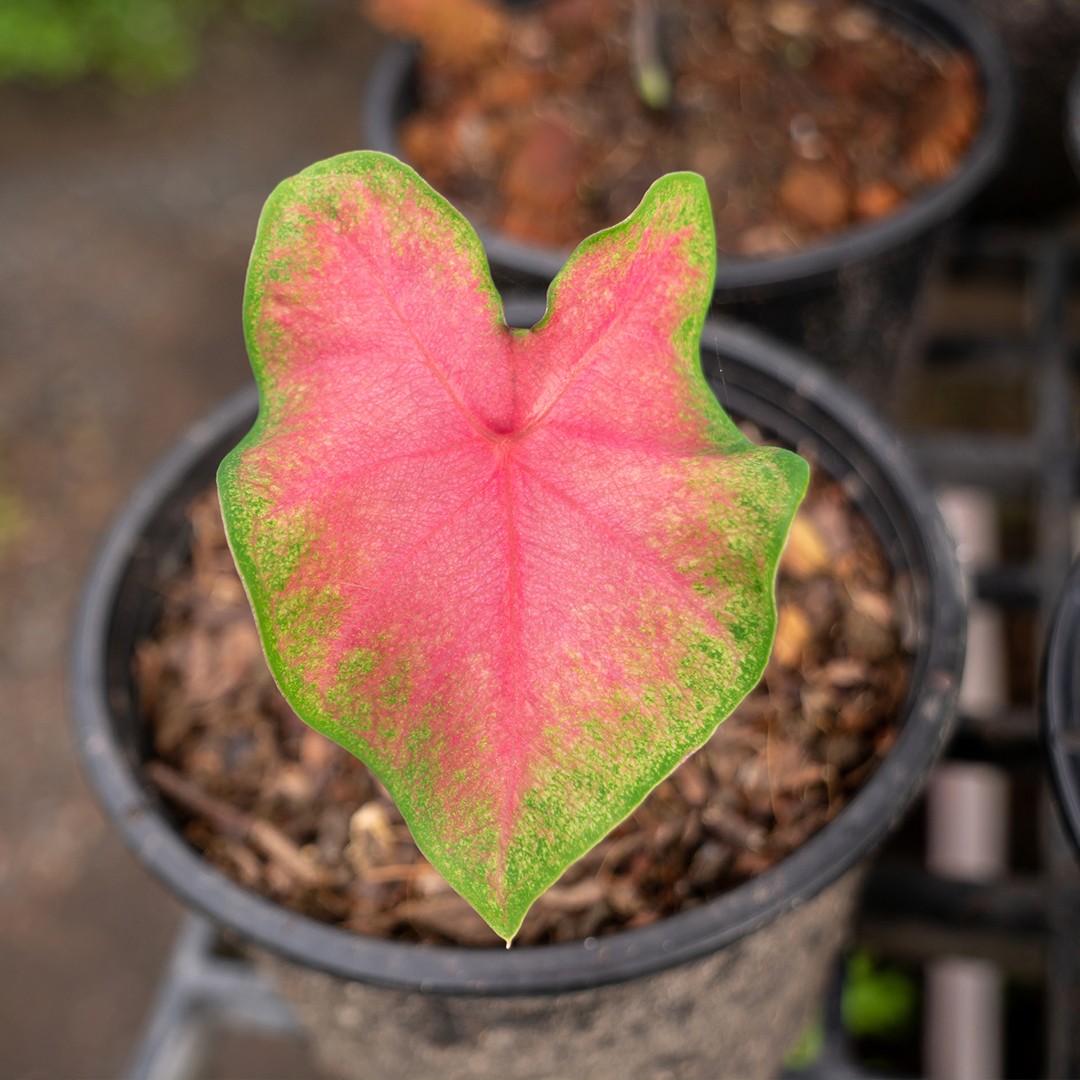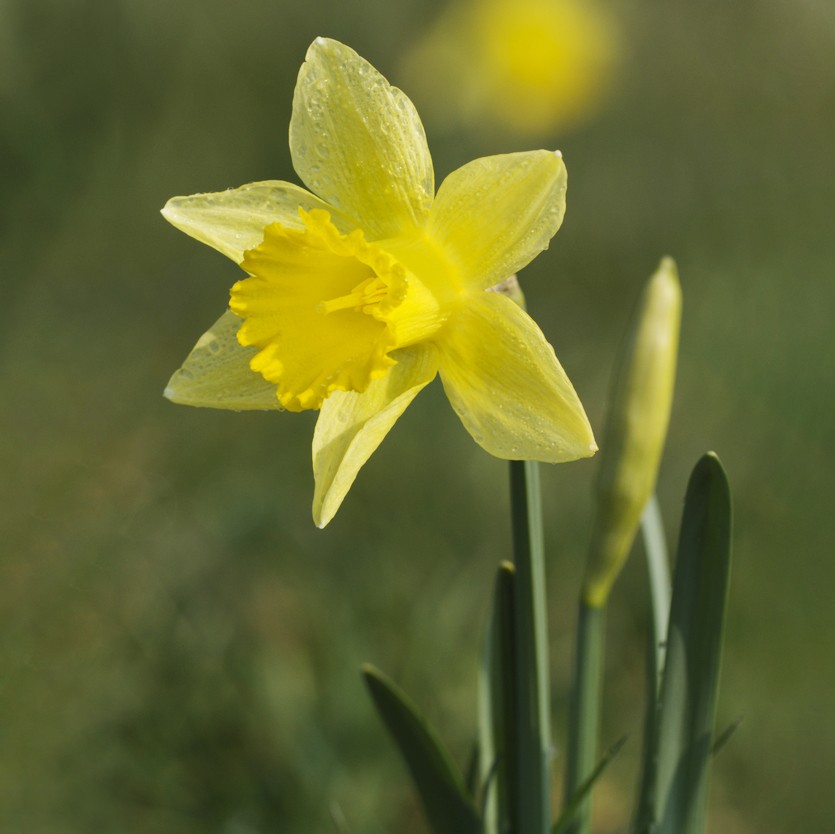What should I do if I water Sun star too much/too little?
Over-watered Sun star will develop yellow leaves. It is normal for yellow leaves to develop when Sun star has reached the end of their blooming period. However, if the leaves turn yellow before the flowers have bloomed, it is a sign of over watering. If you water your Sun star too much, then try to ensure there is adequate drainage and do not give it any more water for a couple of days. You can mix some sawdust into the soil to absorb the moisture. If the situation continues to deteriorate after controlled watering, consider whether the seedpods have rotted. Try digging them up and checking whether they have changed color and become soft. Once you find severe decay, then you should promptly clean out these seedpods. Under-watered Sun star actually looks similar to over-watered Sun star with their yellow leaves. However, the stems will also droop and leaves will look smaller and will curl. You may also see some brown patches appear. If you have given your Sun star too little water, then do not panic. It has a level of drought tolerance. Once you have realised, give it a good drink but do not saturate the surrounding soil. Just make sure it is moist.But do not give them too much and overwater them, you just need to let the soil to be mosit. Extended periods in water can lead to root rot and fungus growing on the bulb. The fungus can cause serious damage to the bulb which is noticed through spots that appear on the leaves and buds. The tips of the leaves may also discolor and die.
![more]()
How often should I water my Sun star?
It very much depends on the location and the current growth state of your Sun star. Once you have planted your Sun star, water them well once and then leave them. That initial watering will kick start their growth, but after that you can leave them be until you see shoots appear. If your Sun star is in a pot, you will need to water them when the top 1-2inch feels dry. Container plants can dry out faster than bedded plants, so ensure that the soil is damp. If your Sun star is planted outside in flower beds and borders, they will not require additional water if it has rained during the week. The Sun star has some drought resistance, slight dryness can be recovered quickly after watering, but excessive watering can directly cause the plant to die once the seed ball rots, you need to stay cautious about how often you water the plant.
![more]()
Should I adjust the watering frequency according to different seasons or climate for my Sun star?
When your Sun star is growing, you will need to water about once a week. As the temperature rises, the soil will dry out faster and you will need to increase the frequency of watering. A dry soil environment will be more friendly to your Sun star than an excessively wet soil environment. Sun star will become dormant during summer and the above-ground parts will completely dry up and die after dormancy,. if you planted it outdoors, you shouldn't need to water it. Moreover, if there's plenty of rain in your region, you should consider digging them out to protect the buds from rot due to too much water. If you planted it in pots, you should stop watering your Sun star completely after the dormant part dries out. After the above-ground part dries out completely, dig up the buds and store them in a cool location or stop watering them completely to keep the soil dry. Resume watering until the next sowing season. Or keep them in the soil in a cool location until the next growing season.
![more]()
What should I look for when planting my Sun star indoors or outdoors?
Monitor your containers for moisture, moving them to a sheltered position if they become sodden or waterlogged. Allow them to dry out and return them when the weather improves. Outdoor planting often takes rainwater into account, and when planting, you should consider planting the plants in well-drained soil to avoid waterlogging and decay. Whether grown indoors or outdoors,before the buds grow out after planting the bulbs, they need very little water and you should try to let the soil dry out completely before watering in small amounts, which will effectively avoid bulb rot. You should wait to water them regularly until they grow new shoots. Your Sun star is more susceptible to rot indoors in low light and poor ventilation. Therefore, you need to be careful when watering indoors and make sure that a lot of the soil is dry before watering. If you can keep it moist for a long time indoors, you also need to consider if your Sun star is in an unsuitable location. Whereas outdoors, good ventilation and plenty of light will be relatively safe.
![more]()
How can I prune my Sun star?
Pruning your Sun star is a fairly simple process. First, you will need a reliable set of hand pruners or hedge trimmers. You may use a clean pair of sharp scissors if you don’t have pruners or garden shears on hand. It’s important to always clean your gardening tools before and after using them to prevent the possibility of spreading disease or infection to other plants. To prune your Sun star simply allow your plant to go dormant over the Winter. Some time between late winter and early spring – or when new growth starts to appear – take your clean pruners or trimmers and cut away any dying, damaged, yellow or declining foliage. Repeat this process until you reach the base of the plant or until there are no dead pieces left to cut. When pruning, be careful not to damage the new growth that may be emerging near the base of your plant. These parts cannot be restored and pruning can increase the ventilation of the plants and facilitate their growth. Any pruning that is done to this plant should be cut straight across the blades or stems. No angled cuts are required. Diseased leaf blade foliage can be removed as it appears. This could be done anytime when your Sun star is growing.
![more]()
What should I do after pruning my Sun star?
Once you’ve pruned your plant, you should dispose of the stems and leaves either by composting the healthy ones or throwing out the diseased parts. You can also fertilize just before or after pruning, which gives Sun star a little vitamin boost that can provide it the nutrients needed to better protect itself from any nearby pathogens or diseases. Do not water the Sun star immediately after pruning as this can lead to fungal infestation of the plants through the wounds. You don’t need much after care when you’re done pruning. It might benefit from light watering and some liquid plant food to encourage new growth.
![more]()
How can I prune my Sun star during different seasons?
Early spring and late winter are the best times to prune your Sun star on a large scale. If you want to control the size of your Sun star, you can prune them as you wish, but be careful not to prune more than a third of the size of the plant. Yellow and diseased leaves may appear during the summer months when the Sun star is growing vigorously and these types of leaves need to be pruned back immediately. These parts of the Sun star cannot be restored and pruning increases the ventilation of the plant and facilitates its growth.
![more]()
When should I prune my Sun star through different stages of growth?
Strategic pruning is usually done at different times of the year or during certain stages of growth depending on the plant. However, knowing when to prune your Sun star depends on where you live and how established your plant is. For example, if your Sun star is a new resident, it’s a good idea to wait until the plant starts to grow back before you start pruning. On the other hand, if your plant is already established, you will want to prune the dry or dead parts in plant before new leafy growth appears in early spring or late winter. This is the time of year when plants are dormant and pruning causes the least damage to them. This is also the best time of year to do more extensive pruning. It’s important to note that if Sun star is pruned too late in the season, it can leave new growth at risk for damage or disease. However, if your Sun star is indoors this is not a problem and you can prune at any time. Since this can affect the long-term health and appearance of your plant, it’s important to keep this in mind when deciding when and how to prune. As your Sun star grows larger over time, you can trim it as needed after annual pruning. Dead, damaged, or diseased leaf blade foliage can be removed as it appears. This could be done anytime when your Sun star is growing.
![more]()
How many hours of sunlight does Sun star need to grow?
Sun star typically needs at least six to eight hours of direct sunlight every day. If you are growing your plant outdoors, make sure to choose a spot that receives full sunlight throughout the day. If you are growing your Sun star indoors, try to place it near a south-facing window or another location that receives plenty of sunlight. While Sun star needs full sunlight to grow and thrive, it’s essential to avoid exposing them to direct sunlight during high temperatures, such as over 35°C(95℉) or during hot summer afternoons. If the sunlight is too intense, it can cause the leaves to become scorched or wilted. To avoid this, you can consider using sheer curtains or blinds to filter the sunlight or moving the plant to a shadier spot.
![more]()
What will happen if Sun star doesn’t get enough sunlight?
If your Sun star doesn't receive enough sunlight, it may struggle to grow and may become weak and leggy. The leaves may also start to turn yellow, indicating that the plant is not getting enough sunlight to produce chlorophyll. In extreme cases, the plant may even die.
![more]()
What will happen if Sun star gets too much sunlight?
While Sun star needs full sunlight, it’s crucial to avoid exposing it to too much direct sunlight. If the plant is exposed to intense sunlight for an extended period, it can start to show signs of sunburn, such as brown or scorched leaves. To avoid this, make sure to monitor the plant and move it to a shadier spot if necessary.
![more]()
What is the optimal temperature for Sun star?
For this tropical plant to thrive, you’ll want to keep them between 75℉ and 90℉ (25-32℃). Each species can handle temperatures outside of this range, but keeping it within several degrees of these limits will ensure they grow to their maximum potential. As for its extreme temperature limits, any environment below 50℉ (10℃) or above 95℉ (35℃) will begin to hinder its growth and cause various aberrations to its leaves and stems. This is especially true with low temperatures; even a light frost can cause your tropical plants to perish. Cellular death can begin to happen at a rapid pace, with some species dying in as little as 12 to 24 hours.
![more]()
Does Sun star require different temperatures for different growing phases?
While Sun star doesn’t require any changes in temperature to enter different growing phases, it is important to stay consistent. Wild temperature fluctuations can slow down its growth regardless of its current phase, so it's always better to keep them in a controlled environment. That optimal temperature range of 75℉ and 90℉ (25-32℃) is vital to maintain, especially staying above the lower limit. Going above 90℉(32℃) isn’t ideal, but as tropical plant it won’t suffer too much. On the other hand, going below 50℉ (10℃) (and especially 40℉/5℃) will begin to directly damage this heat-loving plant species.
![more]()
Does Sun star need different temperatures for different seasons?
Sun star does not need different temperatures for different growing seasons. The most important step in seasonal care is to keep the environment within the optimal temperature range. That's why it's always best to keep this plant indoors. That way, you can control the temperature no matter what the climate is like outside. Light is also important for tropical species, with all of these plants preferring a partial side level of sun exposure. This means any light they receive needs to be dappled or filtered, with bright but indirect light being the best option when growing your plants indoors. Too much direct sunlight can negatively affect your plant’s leaves, reducing its growth potential.
![more]()
What are the temperature guidelines to keep your Sun star healthy?
Tip #1: Don’t Leave Your Plant Near Windows in Colder Months If you want to make sure your plant isn’t exposed to colder temperatures, you may want to keep them away from windows. In colder months like late fall and winter, even the smallest draft can leak cold air into your home through cracks in your windows. While this air usually dissipates and warms up as it travels throughout your home, any plants placed in close proximity to the window will be affected. Move your tropical plants into an area where they will still get bright but indirect light, while making sure they won’t be affected by potential drafts. Tip #2: If You Find Dry Patches, Your Plant May Be Getting Too Much Sunlight or Heat You may notice the leaves become white or even scorched on a sunny day. These discolorations and unusual markings usually indicate that a plant is getting too much heat or sunlight, and it may be dehydrated. Excess light and heat will dry out the soil, stopping plants from getting the moisture they need to support their cellular structure. It also slows down or stops the process of photosynthesis, further hindering growth. If ignored for too long, these dry spots can spread and eventually result in the death of your plants. Tip #3: Avoid Frost at All Costs Colder temperatures and frost can damage your plants by causing ice crystals or disrupt normal physiological activity. This makes it nearly impossible for water to move freely throughout plant tissue, creating a deficit of moisture in their stems and leaves. You can tell a plant has been damaged by frost if it begins to suffer from hydrosis (it will appear as though it's soaked with water.) If the problem persists, your plants may begin shriveling and turning a dark brown or black hue. After that, the plant will almost certainly die.
![more]()
What is the best way to maintain the right temperature for my Sun star?
The best way to maintain the right temperature range for Sun star is by keeping an eye on both the climate and humidity. You’ll want to try to keep each species in a room where you have access to climate control, keeping the heat in the temperature range best mimics its natural habitat. The humidity levels will also have a direct effect on temperature, so it's important to monitor these as well. You can artificially raise the humidity of your growing space by using a humidifier or lightly misting the leaves with water. If you intend to grow this species outside, you may find it difficult to maintain the right balance of temperature and humidity. If temperatures begin to drop or the air becomes too dry, your best option is to find room within your home and move your plant inside. An indoor growing space will allow you to control the climate more closely, helping your plant reach its full potential.
![more]()
Why do I need to fertilize my Sun star?
All plants rely on soil nutrients to facilitate their growth, and the Sun star is no exception. However, it is not always a guarantee that the soil in which your plants grow will have all of the nutrients required. Fertilization and soil amendments help ensure that the plants in your garden not only have the basic nutrients they need but also that they get the nutrients that are specifically necessary to them. Sun star needs fertilizer to ensure that its roots and stems continue to develop in a healthy way throughout the growing season. Fertilization will also help a Sun star a set of leaves that looks fantastic, which is especially important for this plant since its foliage is its main point of ornamental appeal.
![more]()
When is the best time to fertilize my Sun star?
A Sun star will need the greatest amount of fertilizer during the seasons in which it is actively growing. This active growth phase typically spans most of the months that make up spring, summer, and early fall. Once winter ends, you should plan to feed your Sun star about once every two to four weeks. Continue feeding at this rate until the fall months arrive. Once fall arrives, you can reduce your fertilization rate, reducing the amount of fertilizer you give gradually until you cease feedings entirely in anticipation of winter, when the Sun star will have far less active growth.
![more]()
When should I avoid fertilizing my Sun star?
Throughout most of the year, including spring, summer, and most of the fall, you should continue feeding your Sun star regularly. The only exception to this is if you notice that your Sun star has received too much fertilizer or if you have managed to fertilize your Sun star incorrectly, causing fertilizer burn or some other issue that you'll need to remedy before returning to a regular feeding schedule. The only time of year when you should not fertilize a Sun star is during winter. If you grow this plant indoors in an area where the winters are cold, it will enter a dormant phase during the winter. Feeding this plant during its dormant phase is not only unnecessary and unhelpful to this plant's growth, but it is also very likely to cause fertilizer burn.
![more]()
What type of fertilizer does my Sun star need?
The fertilizer for a Sun star has a specific blend of nutrients, each of which is present in relatively low amounts. An ideal fertilizer will have an N-P-K ratio of 3-1-2. However, a general-purpose fertilizer that has an even blend of nutrients can work well in some cases. Still, even when using a balanced fertilizer, the ratio number representing the volume of each nutrient should be at 10 or lower. The fertilizer you use can be either granular or liquid based. If you choose to use a liquid-based fertilizer, it is often best to dilute the strength by half. While there is not much downside to granular fertilizer, it is often most sensible to use liquid fertilizer, especially if you feed your Sun star while you supply water.
![more]()
How do I fertilize my Sun star?
The fertilizer that you purchase for your Sun star will likely come with application instructions that you should follow in most cases. However, for a Sun star, you should always fertilize just before or while you are watering the soil, as this will prevent the fertilizer from burning the plant's roots. If you use a slow-release granular fertilizer, you should sprinkle it on the soil and then provide water immediately after. If you use a liquid-based fertilizer, you should dilute it with water, apply it to the soil, then supply a bit more water. Diluting your fertilizer by at least half is especially important in spring and fall when the plant's growth is ramping up and decelerating, respectively.
![more]()
What happens if I fertilize my Sun star too much?
Since it is advisable to fertilize your Sun star every few weeks throughout the growing season, overfertilization is not often an issue. However, it remains possible for this to occur. If you overfertilize your Sun star, you may notice accumulations of excess fertilizer on the soil’s surface and foliage discoloration. Fertilizer burn is the most common issue you should worry about when feeding a Sun star. This issue occurs when you overfertilize, fail to dilute your fertilizer, or when don’t water during and after fertilization. In any of those cases, the fertilizer can draw moisture out of your plant’s roots, causing it to dry out. Often, fertilizer burn will manifest with browning and yellowing of this plant’s leaves.
![more]()
![icon]()
Get tips and tricks for your plants.
Keep your plants happy and healthy with our guide to watering, lighting, feeding and more.
Download the App for Free
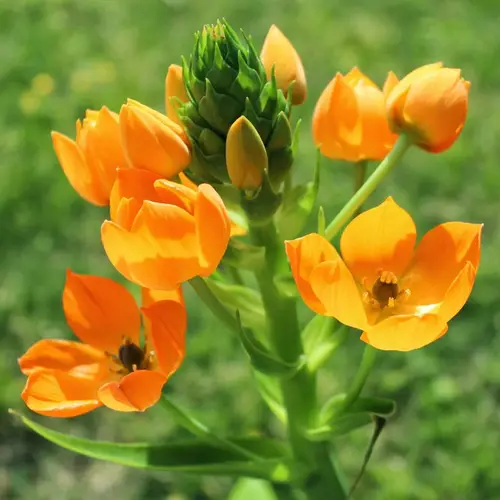
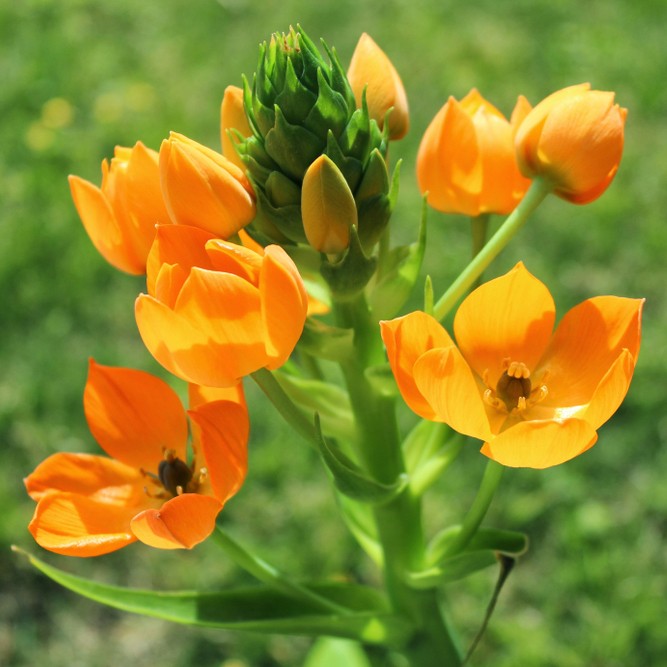
















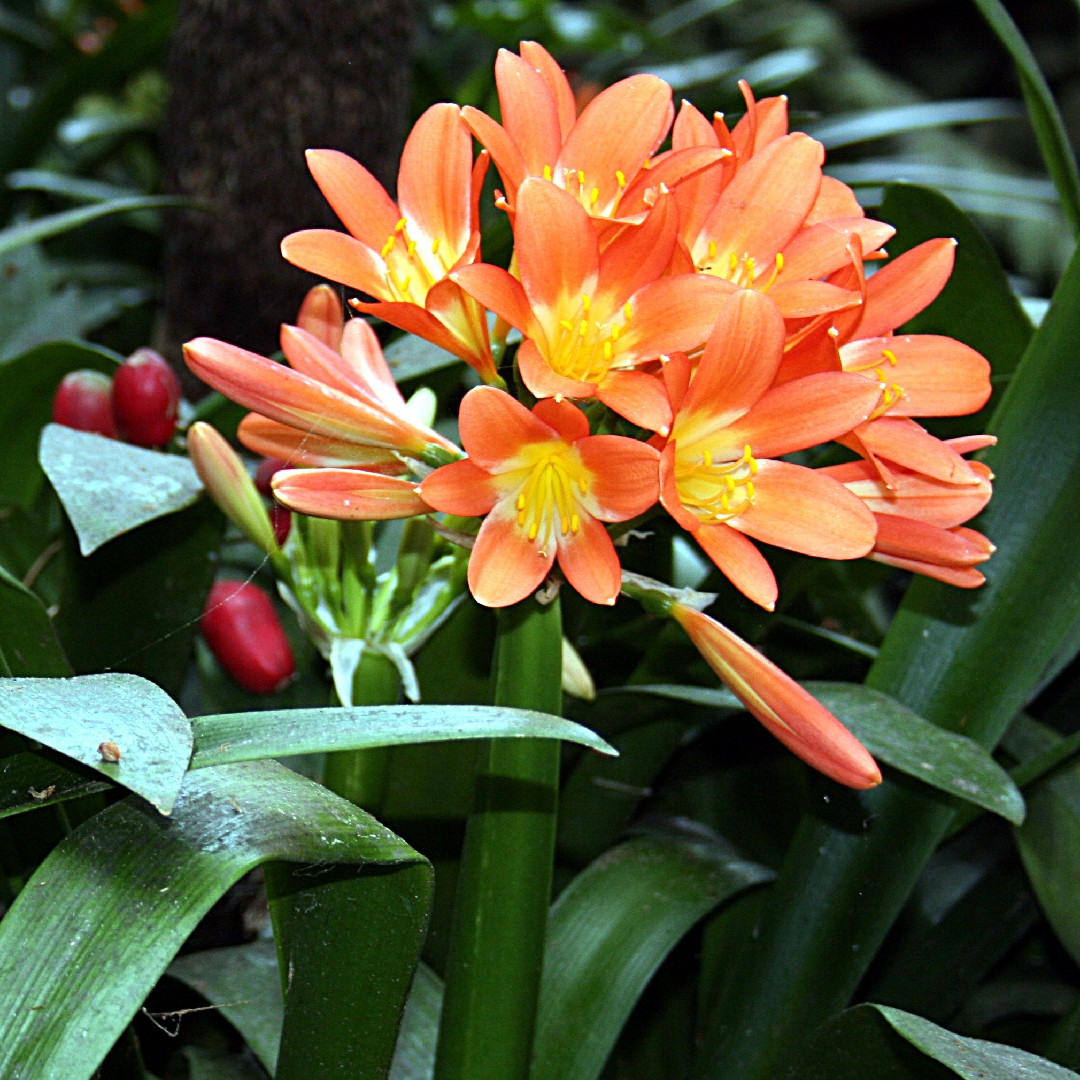
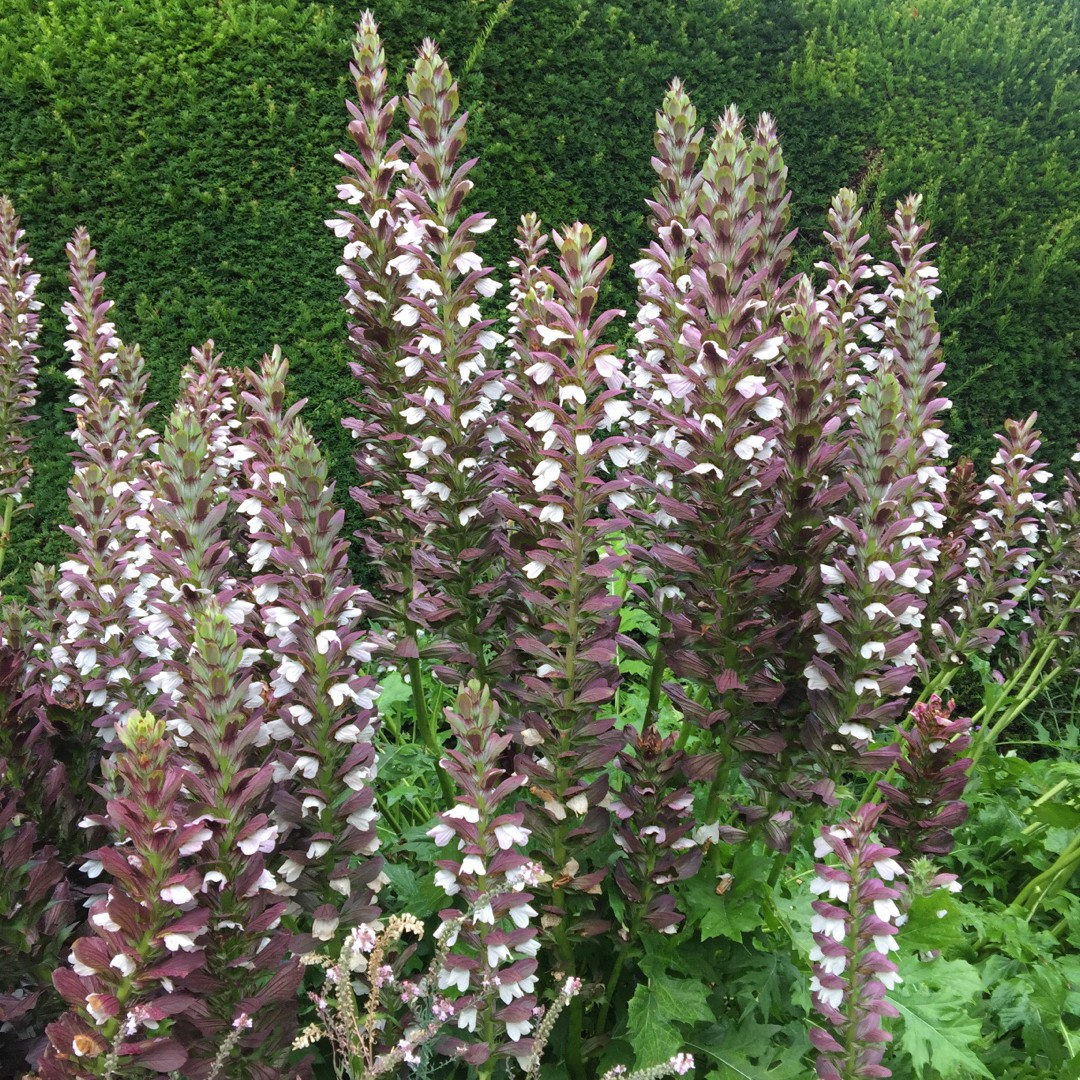
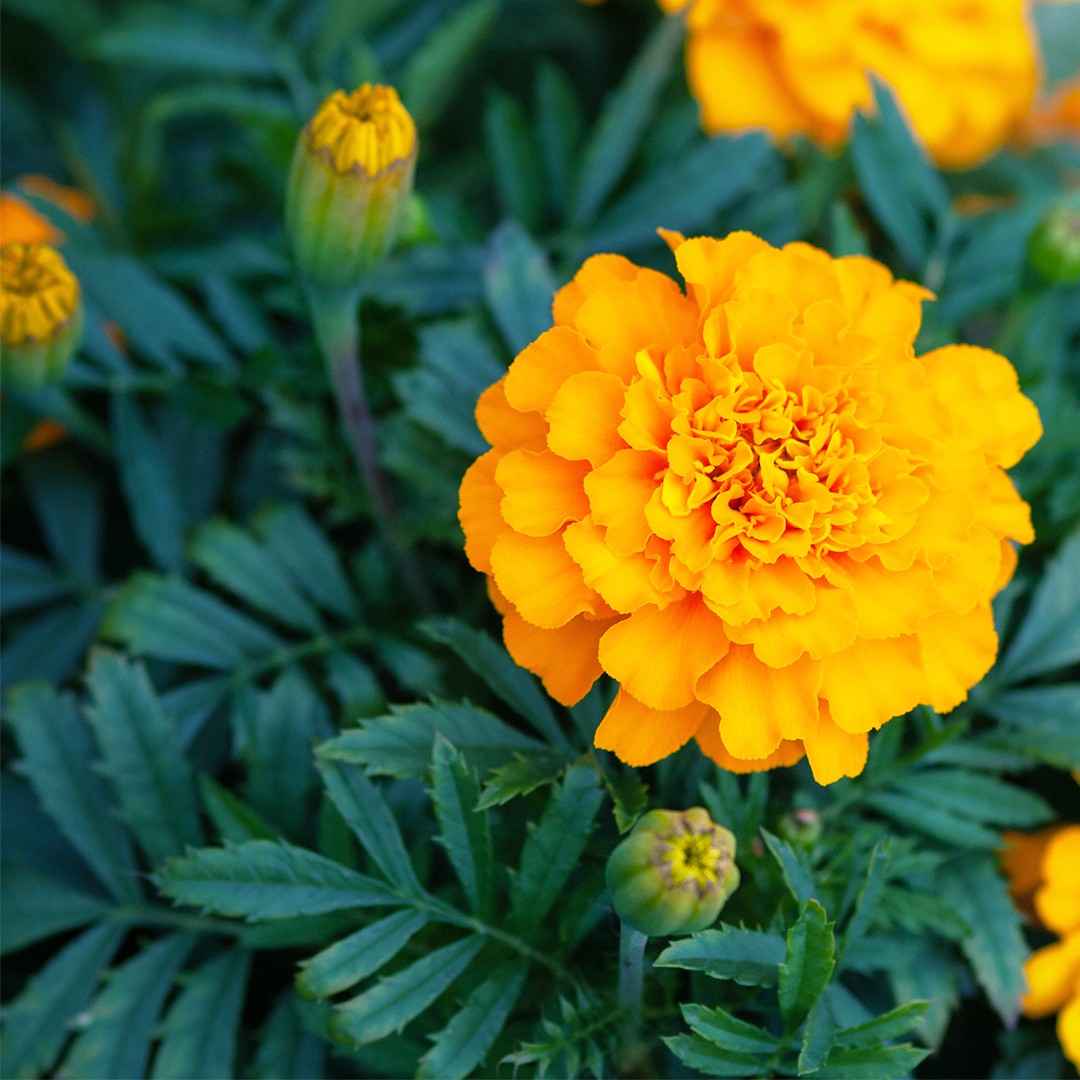
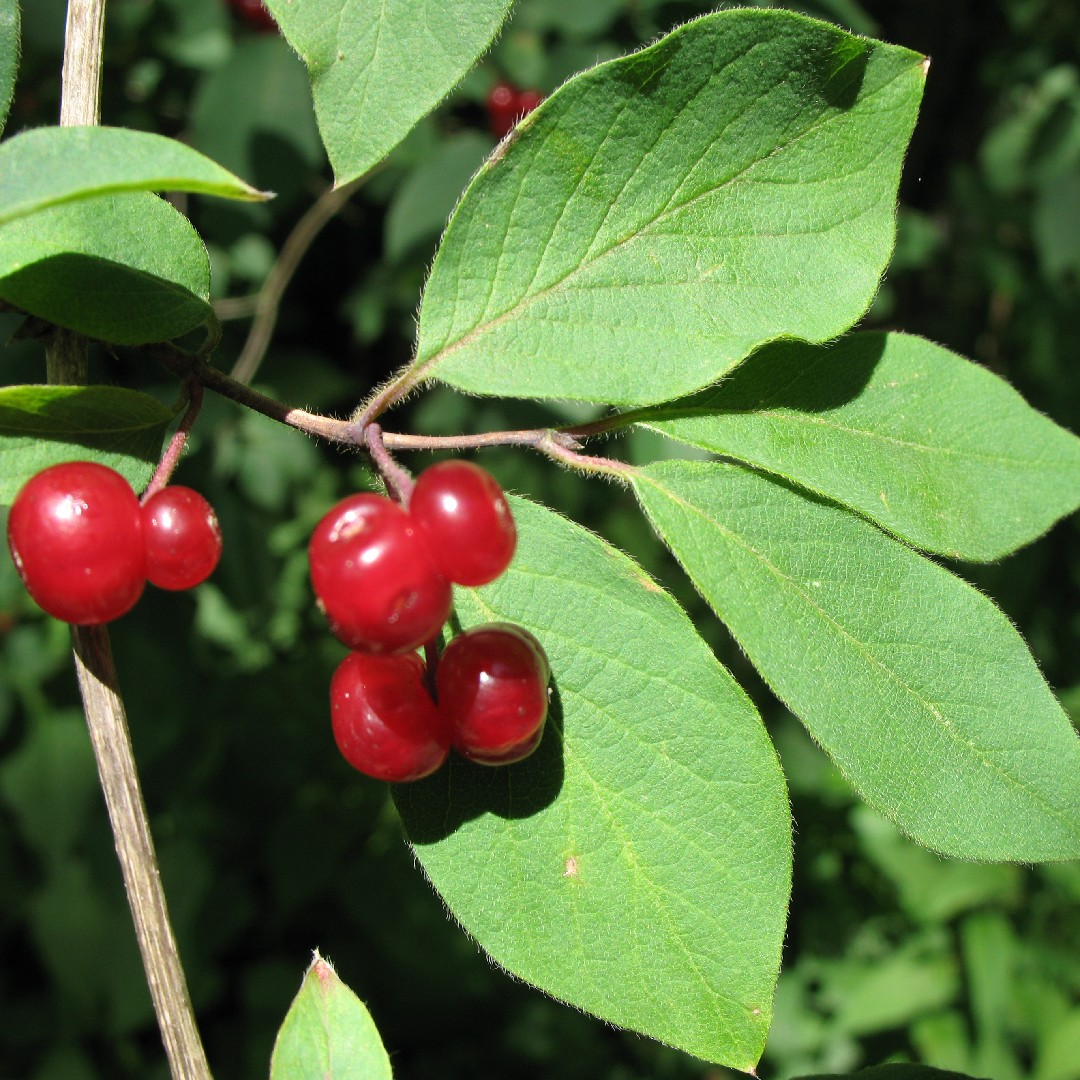
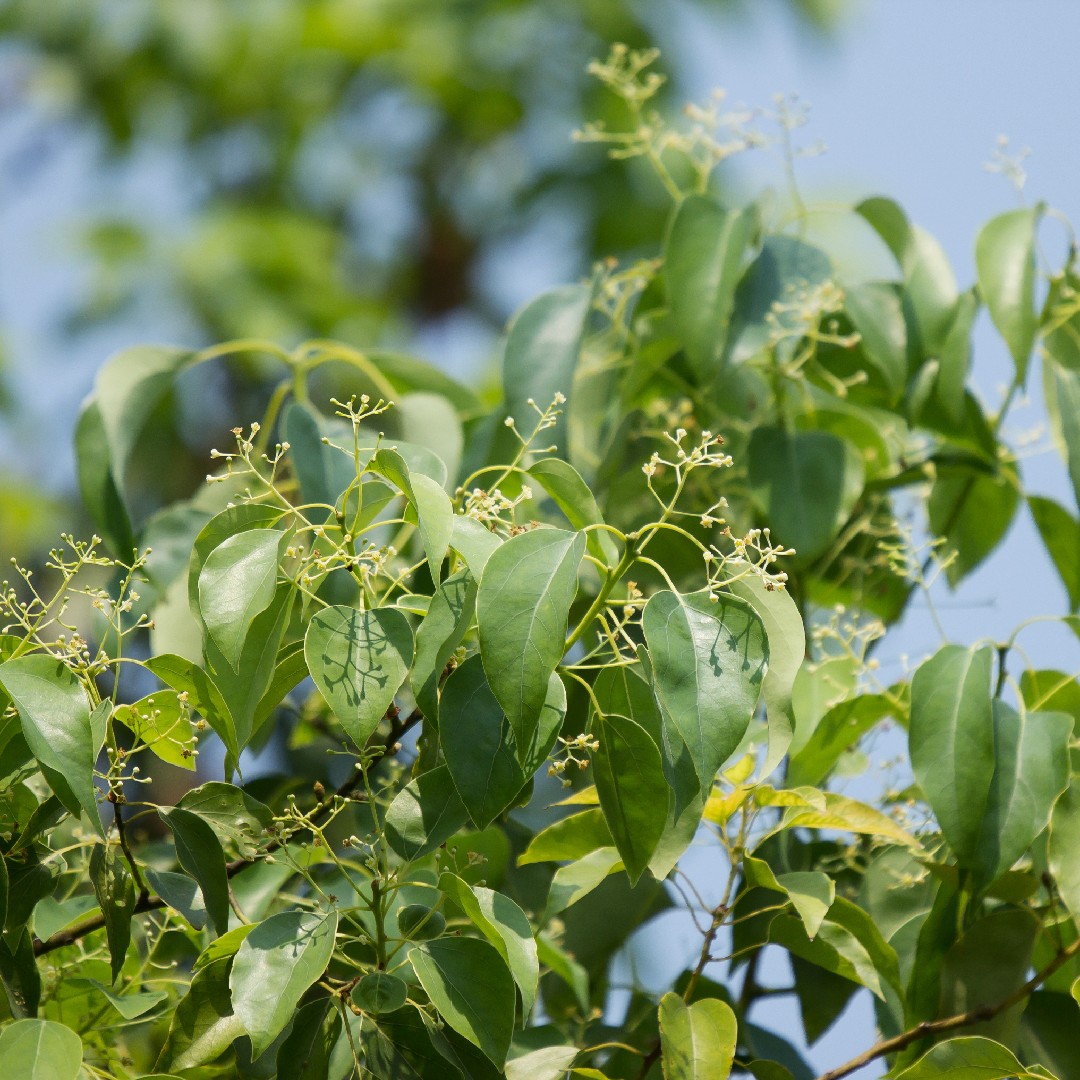
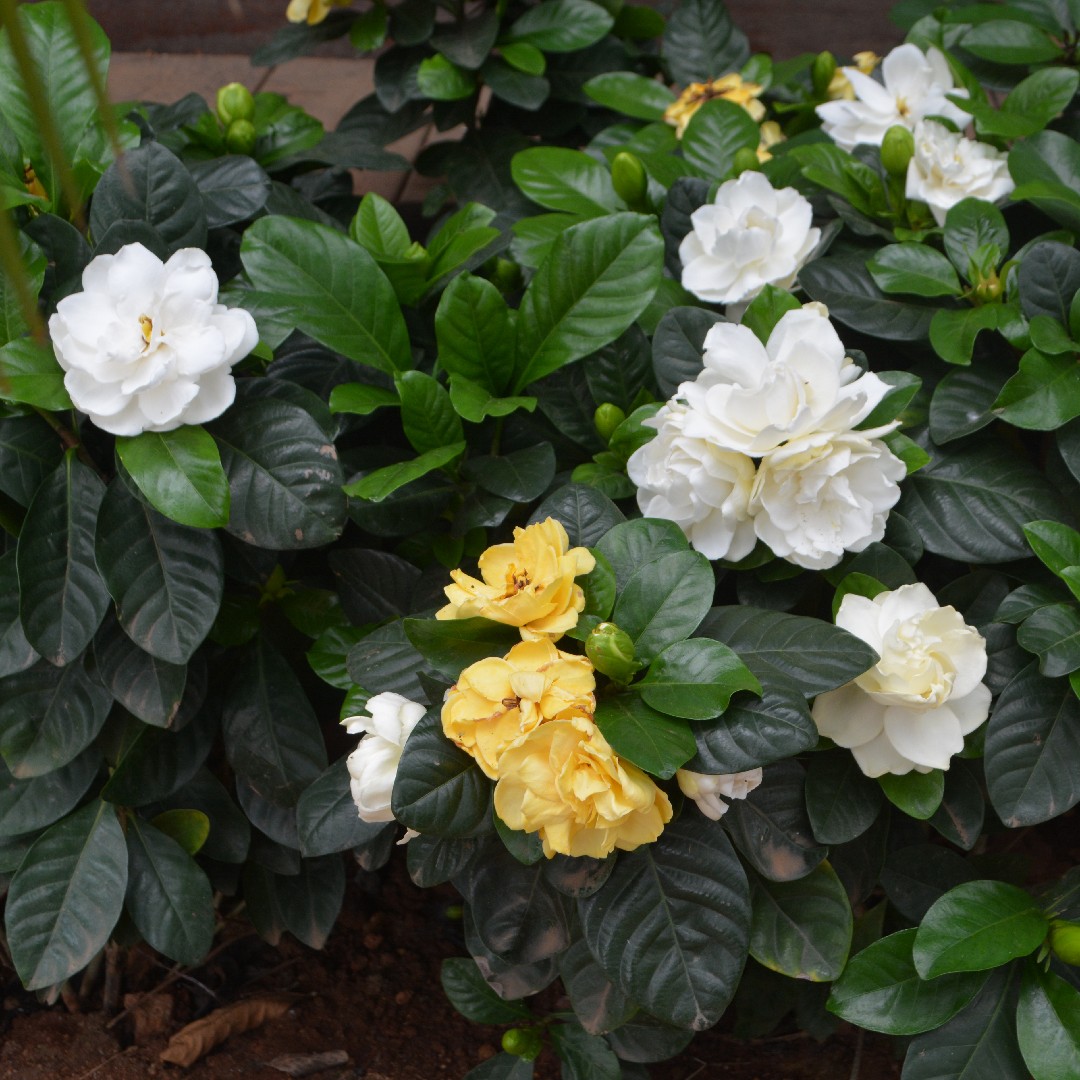








 Watch how sunlight gracefully moves through your garden, and choose spots that provide the perfect balance of light and shade for your plants, ensuring their happiness.
Watch how sunlight gracefully moves through your garden, and choose spots that provide the perfect balance of light and shade for your plants, ensuring their happiness. 















